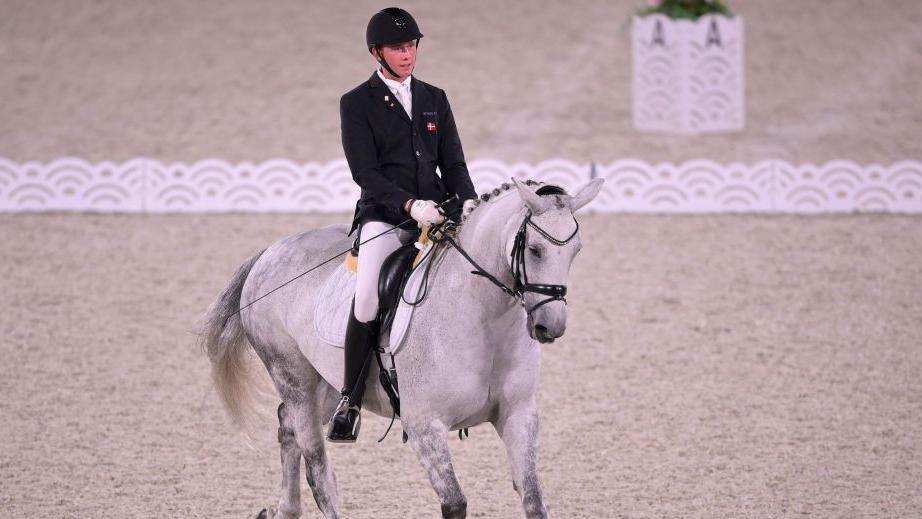Paralympics 2024: A guide to Para-equestrian at the Paris Games

Denmark's Tobias Jorgensen won two golds in Tokyo
- Published
Key information
Dates: 3-7 September
Venue: Chateau de Versailles
Gold medals on offer: 11
Equestrian schedule, events and classifications at the Paralympics
Para-equestrian events at the Paralympics consist solely of dressage competition, with riders divided into five grades - grade I for the most-impaired riders up to grade V for the least impaired.
Men and women compete against each other equally within their specific grades, with riders taking part on their own horses. The level of difficulty of the test they perform is relative to their allocated grade.
Riders may use permitted assistive devices while visually impaired riders are permitted to use 'callers' to help them navigate around the arena.
Grade I, II and III ride in the smaller dressage area while grade IV and V ride in a larger one.
Grade I athletes perform tests at a walk, while grades II and III can walk and trot. In grades IV and V, they perform tests at a walk, trot, cantor and do lateral work.
The programme includes the individual championship test, the team test set to music (in which riders perform a set routine) and the individual freestyle test (which is unique to each rider, as they choose their own routine and music).
A country can enter a maximum of four riders. Three riders take part in the team event - at least one must be in grade I, II or III and no more than two riders within a team may be the same grade
Teams are made up three athletes, at least one of which must be in grades one, two or three. No more than two athletes within a team may be the same grade.
Each combination rides the set test for their grade, which is scored as per the individual test – no scores are carried over from the previous test.
The scores of all three team members are combined to produce a team total, and the nation with the highest total takes gold.
Individual freestyle is open to the top eight athletes from each class based on the results of the individual test.
Who will be competing for GB?
The GB squad features an all-female line-up with Tokyo medallists Natasha Baker, Sophie Wells and Georgia Wilson joined by debutant Mari Durward-Akhurst.
Baker (grade III) and Wells (grade V) are both competing at their third Games and have both previously won Paralympic individual and team golds and will be hoping to add to their tallies.
It will be the first major international for Baker since the birth of her son Joshua in April 2023.
Wilson made her Games debut at Tokyo 2020 following a late call-up from the reserves bench and went on to win grade II individual and freestyle bronze.
Durward-Akhurst became world number one across all five grades in June and partners Athene Lindebjerg, who was the mount of Sophie Christiansen in Rio with the pair winning three golds.
Who are the other medal challengers?
Great Britain will be hoping to maintain their record of winning every team gold since the sport made its Paralympic debut in 1996.
But the competition is stronger than ever and after a nail-biting series of rides in Tokyo, they only held off the Netherlands by 0.656 marks and another exciting competition is guaranteed.
The United States, Denmark and Germany are also strong nations across the various grades.
Did you know?
Para-equestrian made its debut at the 1996 Games in Atlanta with the competition taking place at the Georgia International Horse Park.
About 60 riders from 16 countries competed in nine events on borrowed horses.
The Athens Games in 2004 saw athletes on their own horses for the first time.
ParalympicsGB Tokyo 2020 medals
Eight: Three gold, three silver and two bronze